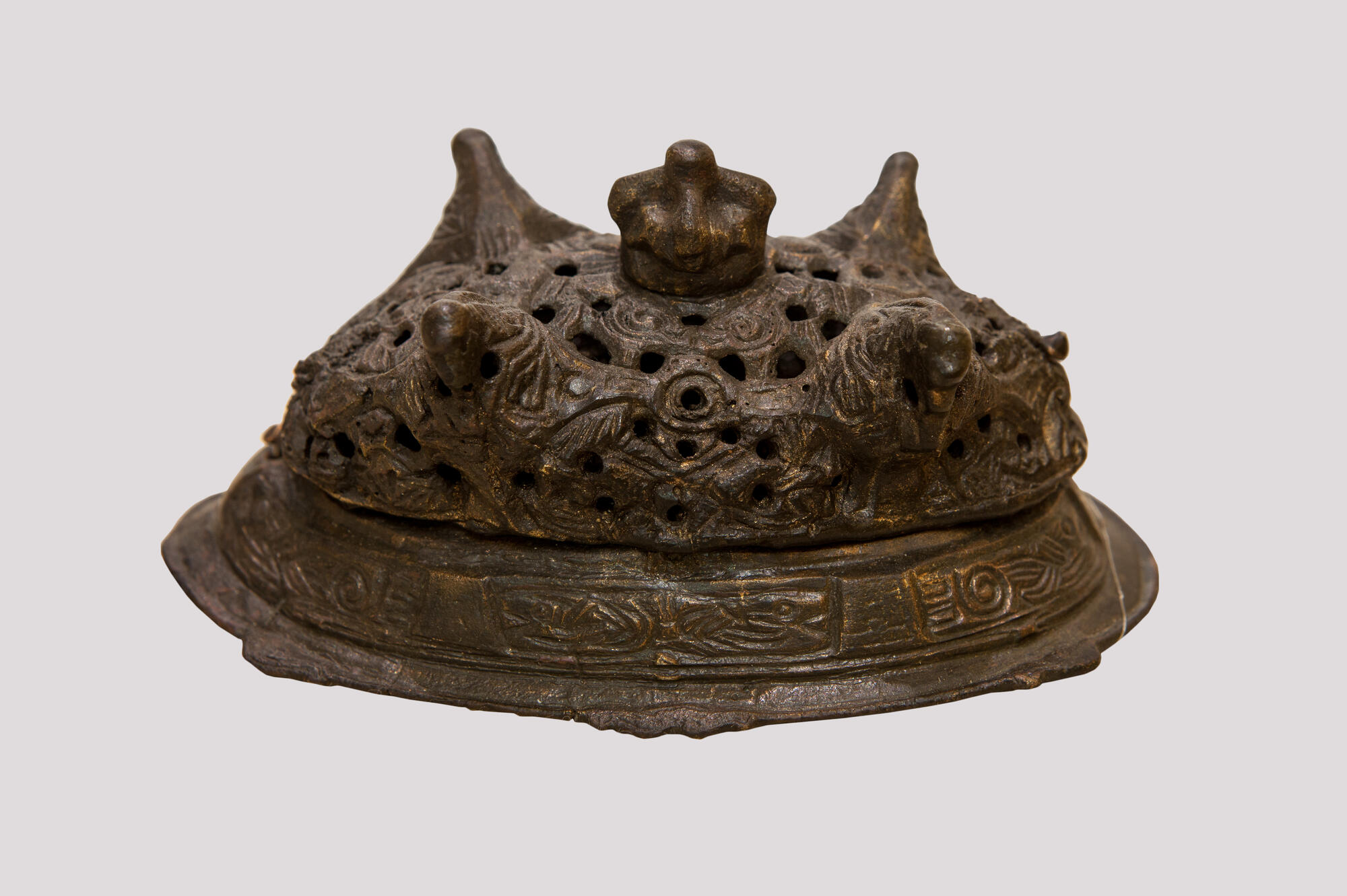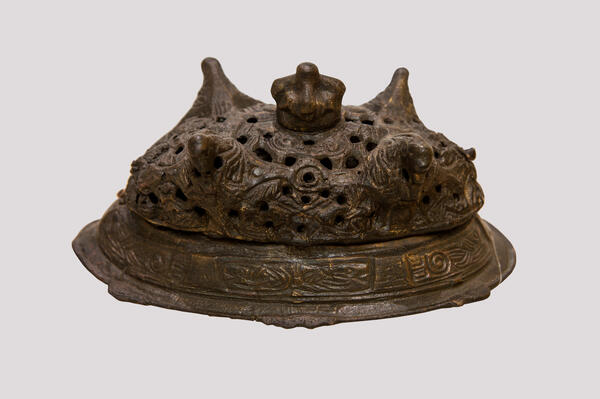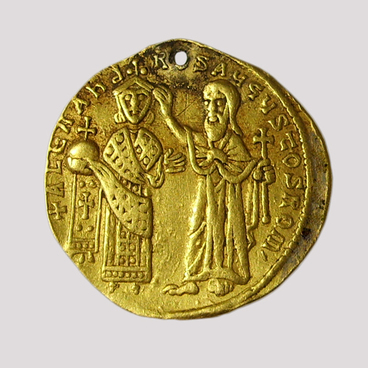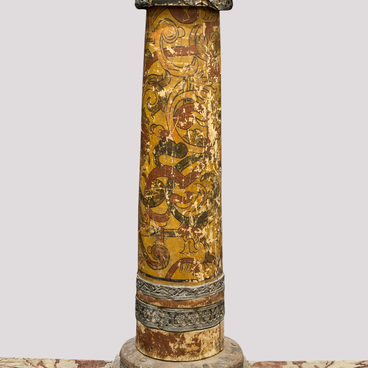A fibula is a decorative pin that served for fastening clothing. Based on archaeological material, there are three main types of fibulae: U-shaped, ring-shaped and oval-convex.
In 1901, an expedition of the Moscow archaeologist Sizov discovered a Turtle-shaped fibula during excavation of burial mounds near the village of Gnezdovo, Smolensk district.
Sizov gave the first description of this object: ‘A solid specimen of such fibula consists of a bronze oval-convex bowl with an ornament on its side. On the top of this bowl, a chiseled covering of the same shape is superimposed, on the surface of which several chiseled thorns usually also rise, always arranged symmetrically: one — the largest- occupies the middle, and at the ends of the oval there are three smaller ones, connected by ribbed straight lines that give the whole this geometric ornamentation the look of two rhombuses… "
Turtle-shaped fibulae were the details of Scandinavian and Karelian women’s clothing. In the early Middle Ages, Scandinavian women fastened the straps of clothes, which consisted of two pieces of fabric, with similar paired fibulae. Such finds among the excavation materials may indicate both the import of these things and the presence of foreigners in Russia.
The issue of the use of fibulae by the Slavs still attracts much attention and causes controversy among scientists. There is an opinion of archaeologists that the turtle-shaped fibulae of the Scandinavians were widespread in Gnezdovo among the Slavic population — local craftsmen took them as a draft in their manufacture. Another group of scientists believes that fibulae are a typical Norman adornment for women of the 9th-11th centuries, which the Slavic women of Gnezdovo could not wear.
Archaeologist Avdusin writes: “Specific are the so-called shell-like fibulae, which had the shape of an egg cut lengthwise, as well as fibulae of some other types. All of them are ornamented in a special Scandinavian style. These fibulae were an indispensable feature of the Scandinavian tribal women”s attire, and they could not be worn in the same sustained severity as the Scandinavians by other ethnic groups. This means that these fibulae could not be the subject of international trade and came to Rus only together with their owners, warriors' wives or their slaves. "
Gnezdovo settlement was a large transport, transshipment and craft point on the trade route ‘from the Varangians to the Greeks.’ Probably, it was in this way that similar items of clothing got to the territory of the present Smolensk region.
In 1901, an expedition of the Moscow archaeologist Sizov discovered a Turtle-shaped fibula during excavation of burial mounds near the village of Gnezdovo, Smolensk district.
Sizov gave the first description of this object: ‘A solid specimen of such fibula consists of a bronze oval-convex bowl with an ornament on its side. On the top of this bowl, a chiseled covering of the same shape is superimposed, on the surface of which several chiseled thorns usually also rise, always arranged symmetrically: one — the largest- occupies the middle, and at the ends of the oval there are three smaller ones, connected by ribbed straight lines that give the whole this geometric ornamentation the look of two rhombuses… "
Turtle-shaped fibulae were the details of Scandinavian and Karelian women’s clothing. In the early Middle Ages, Scandinavian women fastened the straps of clothes, which consisted of two pieces of fabric, with similar paired fibulae. Such finds among the excavation materials may indicate both the import of these things and the presence of foreigners in Russia.
The issue of the use of fibulae by the Slavs still attracts much attention and causes controversy among scientists. There is an opinion of archaeologists that the turtle-shaped fibulae of the Scandinavians were widespread in Gnezdovo among the Slavic population — local craftsmen took them as a draft in their manufacture. Another group of scientists believes that fibulae are a typical Norman adornment for women of the 9th-11th centuries, which the Slavic women of Gnezdovo could not wear.
Archaeologist Avdusin writes: “Specific are the so-called shell-like fibulae, which had the shape of an egg cut lengthwise, as well as fibulae of some other types. All of them are ornamented in a special Scandinavian style. These fibulae were an indispensable feature of the Scandinavian tribal women”s attire, and they could not be worn in the same sustained severity as the Scandinavians by other ethnic groups. This means that these fibulae could not be the subject of international trade and came to Rus only together with their owners, warriors' wives or their slaves. "
Gnezdovo settlement was a large transport, transshipment and craft point on the trade route ‘from the Varangians to the Greeks.’ Probably, it was in this way that similar items of clothing got to the territory of the present Smolensk region.



